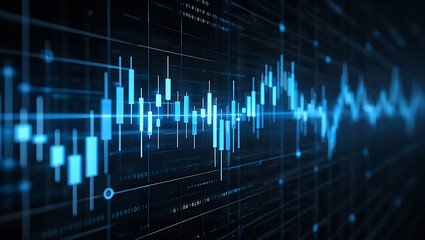Not only do the financial markets react on the basis of the economic indicators but also due to human psychology. Often, individual traders make decisions based on emotions, intuition, or cognitive shortcuts rather than relying on objective analysis. As a consequence, they yield inconsistent outcomes, possible losses, and severe consequences for themselves as well as for such a market. Technology, particularly algo trading, now includes a mechanism to scourge off the terrible effect of psychological biases on trading decisions.
1. Confirmation Bias
Confirmation bias is when traders look for information supporting pre-existing beliefs and ignore anything contradictory to them. Such a bias would impact decision-making in investment purchasing, because market data might be biasedly interpreted to conform to an investor’s pre-existing notions. Algo trading links this bias by executing trades strictly based on pre-set criteria. Algorithms have no capability of evaluating information subjectively based on personal beliefs or preferences; they follow rules laid down by objective indicators, history, and stat patterns. It thus assures consistency in decision-making based on the strategy instead of the selective interpretation of information.
2. Overconfidence Bias
Overconfidence bias relates to the tendency that people have of being overconfident about their knowledge and skills or that they are able to control something in the market outcome. It can push people into phenomenally bigger risks or, worse still, ignore basic management principles of risks. One of the ways through which the self-delusion by traders is handled is by using algorithmic trading that depends on pre-programmed strategies constrained to accepted risk parameters. The algorithms thus will execute the trades in a judgment-free manner, so that such impulsive or overly aggressive actions are minimized. So, the entire trading process becomes systemic and controlled, shielding it from any decision predisposed by exaggerated self-assessment.
3. Loss Aversion
Loss aversion refers to the preference to avoid a loss relative to acquiring an equivalent gain. Indecision might thus impel holding on to losing positions for longer than they should or very early closing of profitable positions. Algo trading takes out loss aversion by incorporating stop-loss and take-profit levels within the trading strategy. Those levels are automatically triggered to activate without a trader having to continuously make decisions in real-time through fear-inducing constructions or anxiety. Automated execution will provide closure of trades based on a predetermined design, ensuring uniformity in risk management irrespective of the emotional response.
4. Herd Behavior
Herd behavior tends to happen when traders simply follow the herd rather than determining independently based on analysis. This can create market movements that arise out of collective sentiment and not because the fundamentals occur. Algorithmic strategies take care of herd behavior in that they put aversion in social cues and market sentiment, but rather focus on getting signals driven by data. The algorithms, acting on historical patterns and other technical indicators along with other processes, tend to create trading conclusions based on that context. Thus by following rules, algo trading excludes peer behavior influence, permitting trades by logic rather than collective psychology.
5. Anchoring Bias
Anchoring bias happens when traders overly indulge in a given reference point, such as a price level in the past or a certain prediction, to make their decisions. Consequently, what happens is insufficient assessment of the current conditions of the markets. That being the case, algorithmic trading suppresses anchoring by always inputting and adjusting strategies according to emerging real-time phenomena. The algorithms rely instead on fixed reference points or assumptions of the past, as far as stipulated in the strategy. It is to be processed objectively through the current market information under which the algo trading would place the trading decisions sharper to what is happening outside rather than anchored to prior beliefs.
Dematerialisation and Algo-Trading
Dematerialization refers to the process by which physical share certificates are converted into electronic formats, enabling the absolute holding and transfer of securities digitized by investors. This has efficiently simplified the trading process, allowing for quicker settlement and lessened paperwork. In the case of algorithmic trading, dematerialization brings instant access to electronic securities, which enables the algorithms to proceed with trading activity without any lag time usually brought about by physical documentation. Instead, the combination of algo trading with dematerialization effectively streamlines the investment process, reduces operational risks, and finally increases precision in execution.
Conclusion
Psychological biases are known to affect the manner in which an individual would trade and market, with all the consequential effects on trading activities. This way, the consequence of algo trading, which is to set an organized framework by creating rules and data-structured basis to execute trades, has alleviated the emotional and cognitive shortcuts and subjective judgments. Heuristic biases such as confirmation bias, overconfidence, loss aversion, herd behavior, and anchoring bias, are further subject to cure through usage of algorithmic strategy. Besides, dematerialisation will greatly enhance efficiency in trading by facilitating easy electronic access and transfer of securities.















Leave a Reply